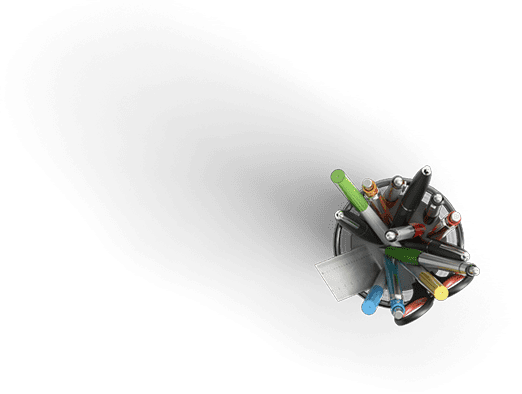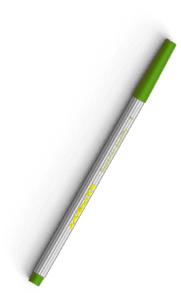Odessa College Conception Through Childhood & Lifespan Development Discussion
Question Description
-
Perspective Paper 1: Infancy to Childhood
As you’ve learned, we divide the study of lifespan development into three broad categories: conception through childhood, adolescence, and adulthood to death. In this assignment, you will be looking at the first broad category, which is conception through childhood, and applying your research to compare and contrast two of the lifespan theorists. Later in this course, you will have this assignment again but applied to the other broad categories. NOTE: If you have taken this course previously or completed this capstone assignment in another course you can NOT resubmit your original paper. I do not allow recycled papers for this assignment.I will evaluate your sources if the plagiarism report is over 20% for the written content not including references). Be sure to write in your own words and provide in-text citations and references in APA format. Step One:Please choose two theorists from the list below. You may select different theorists or keep these for the subsequent assignments.
- Freud’s psychosexual stage theory
- Erikson’s psychosocial stage theory
- Kohlberg’s moral understanding stage theory
- Piaget’s cognitive development stage theory
- Bronfenbrenner’s ecological systems theory
Step Two:Research your selected theorists. The embedded text in this course will help, and you may also use resources from the approved list of websites given to you in your syllabus:Websites: Here is an approved list of websites that you are allowed to use for research: .edu and .gov may also be used but be aware of student papers
- www.apa.org
- www.eric.ed.gov
- www.plos.org
- www.scholar.google.com (note that the actual source will still be something else listed in google scholar)
- www.omicsonline.org
- https://www.odessa.edu/current-students/Learning-Resources-Center-Library/Super-Search/index.html
Banned Websites: Please do NOT use the following websites for any research paper or to fulfill the scholarly reference requirement. Points will be deducted if these sources are used. .net or .com should also never be used! These are NOT scholarly resources:
- Simply psychology
- About psychology
- Wikipedia
- Psychology Today
- Psychologynotes
- Spark Notes
- Cliff Notes
- Verywellmind
- Paper Generators
- Britannica
- Webster
Step Three:Use the template to write your paper. Be sure to include the exact headings provided as they clearly distinguish between the sections you discuss! You will need a title page as shown.Other important things to note:
- This assignment is a WORD document that is attached and submitted through safe assign (check the plagiarism tool box before hitting submit). pdf or other document types will NOT be accepted.
- I expect a title page, reference page (at least two more sources in addition to Siegler as this is research oriented), citations within the paragraphs, etc. according to APA format.
- I also expect the headings as given in your template for the paper.
- Except for the initial introduction that asks you to talk briefly about your lifespan related to the stage, the rest of the paper should follow formal language without I, we, you, etc. Avoid contractions – instead of “cant,” use “cannot,” etc.
- Use your own words rather than rely on quotations or copying and pasting or just changing a few words that is considered plagiarism.
- Show me your understanding of the content in simple words.
- You final product should be a 2-3 page paper, not including your title page or reference page.
If you don’t know APA, please rely heavily on this website.

Required Reading and Video Links: Infancy
Required Reading and Video Links: InfancyIntroduction to Infancy
Introduction
Welcome to the story of development from infancy through toddlerhood; from birth until about two years of age. Researchers have given this part of the life span more attention than any other period, perhaps because changes during this time are so dramatic and so noticeable and perhaps because we have assumed that what happens during these years provides a foundation for ones life to come. However, it has been argued that the significance of development during these years has been overstated (Bruer, 1999). Nevertheless, this is a period of life that contemporary educators, healthcare providers, and parents have focused on most heavily. We will examine growth and nutrition during infancy, cognitive development during the first 2 years, and then turn our attention toward attachments formed in infancy. Physical Development Overall Physical GrowthThe average newborn in the United States weighs about 7.5 pounds and is about 20 inches in length. For the first few days of life, infants typically lose about 5 percent of their body weight as they eliminate waste and get used to feeding. This often goes unnoticed by most parents, but can be cause for concern for those who have a smaller infant. This weight loss is temporary, however, and is followed by a rapid period of growth. By the time an infant is 4 months old, it usually doubles in weight and by one year has tripled it birth weight. By age 2, the weight has quadrupled. The average length at one year is about 26-32 inches. Body ProportionsAnother dramatic physical change that takes place in the first several years of life is the change in body proportions. The head initially makes up about 50 percent of our entire length when we are developing in the womb. At birth, the head makes up about 25 percent of our length (think about how much of your length would be head if the proportions were still the same!). By age 25 it comprises about 20 percent our length. Imagine now how difficult it must be to raise ones head during the first year of life! And indeed, if you have ever seen a 2 to 4 month old infant lying on the stomach trying to raise the head, you know how much of a challenge this is. The Brain in the First Two YearsSome of the most dramatic physical change that occurs during this period is in the brain. At birth, the brain is about 25 percent its adult weight and this is not true for any other part of the body. By age 2, it is at 75 percent its adult weight, at 95 percent by age 6 and at 100 percent by age 7 years.While most of the brains 100 to 200 billion neurons are present at birth, they are not fully mature and during the next several years dendrites or connections between neurons will undergo a period of transient exuberance or temporary dramatic growth. There is a proliferation of these dendrites during the first two years so that by age 2, a single neuron might have thousands of dendrites. After this dramatic increase, the neural pathways that are not used will be eliminated thereby making those that are used much stronger. This activity is occurring primarily in the cortex or the thin outer covering of the brain involved in voluntary activity and thinking. The prefrontal cortex that is located behind our forehead continues to grow and mature throughout childhood and experiences an addition growth spurt during adolescence. It is the last part of the brain to mature and will eventually comprise 85 percent of the brains weight. Experience will shape which of these connections are maintained and which of these are lost. Ultimately, about 40 percent of these connections will be lost (Webb, Monk, and Nelson, 2001). As the prefrontal cortex matures, the child is increasingly able to regulate or control emotions, to plan activity, strategize, and have better judgment. Of course, this is not fully accomplished in infancy and toddlerhood, but continues throughout childhood and adolescence.Another major change occurring in the central nervous system is the development of myelin, a coating of fatty tissues around the axon of the neuron. Myelin helps insulate the nerve cell and speed the rate of transmission of impulses from one cell to another. This enhances the building of neural pathways and improves coordination and control of movement and thought processes. The development of myelin continues into adolescence but is most dramatic during the first several years of life. From Reflexes to Voluntary MovementsInfants are equipped with a number of reflexes which are involuntary movements in response to stimulation. These include the sucking reflex (infants suck on objects that touch their lips automatically), the rooting reflex, which involves turning toward any object that touches the cheek, the palmar grasp (the infant will tightly grasp any object placed in its palm), and the dancing reflex evidence when the infant is held in a standing position and moves its feet up and down alternately as if dancing. These movements occur automatically and are signals that the infant is functioning well neurologically. Within the first several weeks of life these reflexes are replaced with voluntary movements or motor skills. Gross Motor SkillsThese voluntary movements involve the use of large muscle groups and are typically large movements of the arms, legs, head, and torso. These skills begin to develop first. Examples include moving to bring the chin up when lying on the stomach, moving the chest up, rocking back and forth on hands and knees. But it also includes exploring an object with ones feet as many babies do as early as 8 weeks of age if seated in a carrier or other devise that frees the hips. This may be easier than reaching for an object with the hands, which requires much more practice (Berk, 2007). And sometimes an infant will try to move toward an object while crawling and surprisingly move backward because of the greater amount of strength in the arms than in the legs! Fine Motor SkillsFine motor skills are more exact movements of the hands and fingers and include the ability to reach and grasp an object. Newborns cannot grasp objects voluntarily but do wave their arms toward objects of interest. At about 4 months of age, the infant is able to reach for an object, first with both arms and within a few weeks, with only one arm. Grasping an object involves the use of the fingers and palm, but no thumbs. Stop reading for a moment and try to grasp an object using these fingers and the palm. How does that feel? How much control do you have over the object? If it is a pen or pencil, are you able to write with it? Can you draw a picture? The answer is probably not. Use of the thumb comes at about 9 months of age when the infant is able to grasp an object using the forefinger and thumb. This ability greatly enhances the ability to control and manipulate a
Have a similar assignment? "Place an order for your assignment and have exceptional work written by our team of experts, guaranteeing you A results."








